Casio Pro Trek Smart WSD-F20 Review - Fitness Tracking Review
Fitness Tracking
An Android Wear watch for hikers
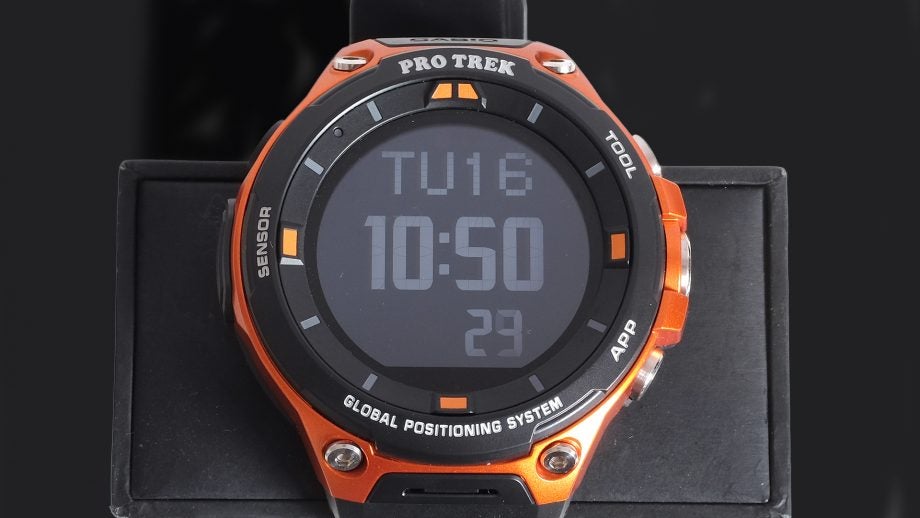
Sections
- Page 1 Casio Pro Trek Smart WSD-F20 Review
- Page 2 Fitness Tracking Review
- Page 3 Software, Battery Life and Verdict Review
Casio WSD-F20 – Fitness tracking
It’s important to understand what the Casio WSD-F20 is about. Having used it for a while now, it’s clear this is predominantly a hiker’s watch. It could be used by runners. It could be used by cyclists. But it’s out in the middle of nowhere, on a hill where you have no mobile signal, that the WSD-F20 comes into its own.
In the Tools section, you’ll discover screens that offer information useful for hikers. There’s an altimeter, air pressure read-out, a clock showing the sunrise and sunset times, a compass and an indicator of the day’s tide levels. That last one might be good for surfers, but Casio suggests the 50-metre water resistance isn’t really good enough for surfing.
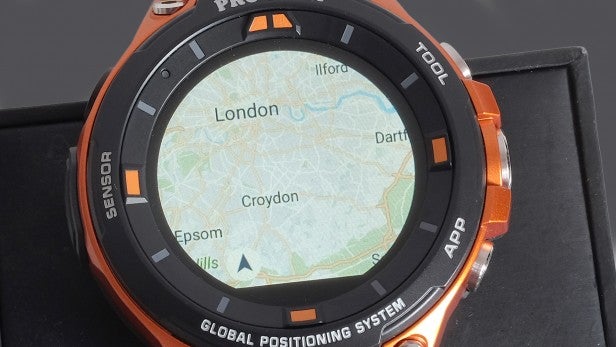
The location-finder app you launch by pressing the Casio WSD-F20’s lower button is also clearly for amblers rather than runners. It doesn’t rigorously log your performance, or analyse your cadence. Instead, you can look at your location on the watch within a second, and add voice notes and memos to places you’ve visited.
I can imagine it appealing to people who want the modern equivalent of classic map and compass navigation, without having to bring any extra kit.
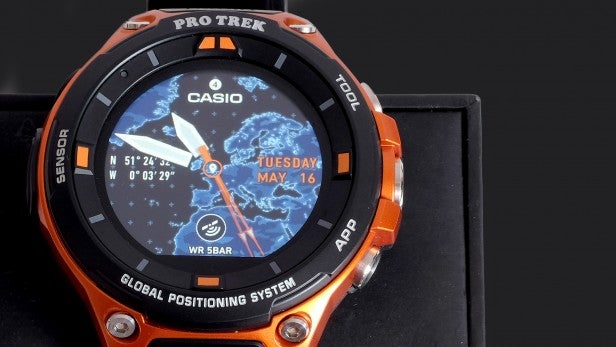
One of the Casio WSD-F20’s key features is its ability to download map data for use offline. There are terrain and satellite views, as well as a standard Google Maps-style view. It doesn’t use the Google Maps API, though, but Mapbox – which in turn uses OpenMapStreet’s data.
If you’re not going to use the Casio WSD-F20 for hikes, walks, long cycling trips or something similar, you’re missing out on much of this watch’s functionality.
However, there is another multi-sport tracking side. Add the Activity app and the WSD-F20 offers watch-style screens for hikes, fishing trips, cycling, canoeing and skiing.
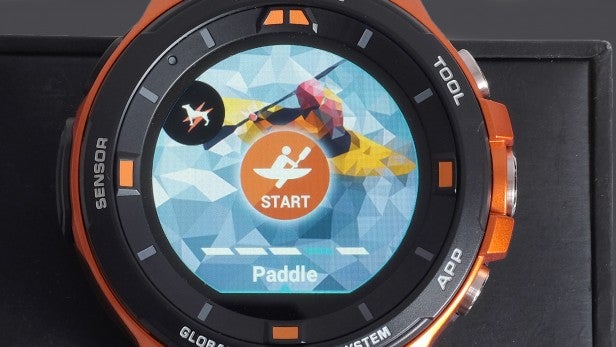
These provide standard metrics such as elevation speed and distance as relevant, although the fishing one focuses on recording your catches and logging them on a map. I don’t canoe or fish, but I imagine the extra sensors here will be useful – as well as GPS, Bluetooth and Wi-Fi, there’s a barometer/altimeter and magnetometer.
The extra tracker screens are fairly intuitive – although, curiously, the data doesn’t seem to end up anywhere other than the Location History app on the Casio WSD-F20.
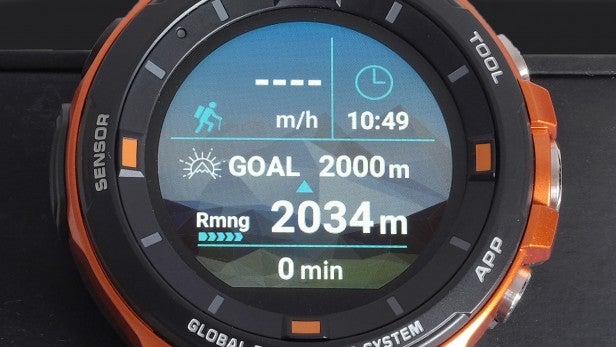
There’s no wider platform to track your stats over a period of time, other than on the watch itself. This will disappoint some – but in a way it’s refreshing to see a watch focus on the activity as you’re doing it, rather than obsessing over delivering graphs and metrics afterwards.
It goes further too, with a Moments app that can remind you when you need to take a break; have travelled a set distance or are a certain number of metres from the summit of a mountain. But I’ll admit to enjoying looking over the stats of walks and runs on my phone after doing them.
The Casio WSD-F20 does offer such functionality, but through the use of a third-party app. Google Fit Workout does the job for casual walks and runs. And now that most of the big running apps support ‘standalone’ use, alternatives such as ViewRanger, Strava and Runkeeper will work well too.
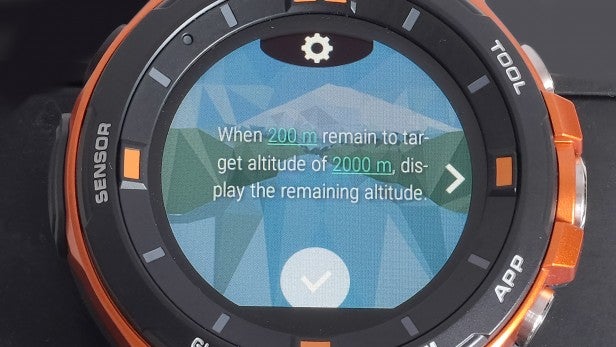
GPS performance seems solid. I found that it locks on in around 15 seconds, and I didn’t experience any strange dropouts. Looking at the routes recorded by Google Fit Workouts, accuracy is decent, if not perfect. There were no reports of me suddenly zig-zagging through non-existent roads, but I did apparently walk straight through a few buildings, simply because the regularity of GPS tracking wasn’t that intense.
Using the watch’s apps it is possible to opt for a particular level of tracking accuracy, with a battery trade-off for more precise GPS use. The GPS chipset also supports GLONASS and Michibiki, yet another satellite system, which will improve tracking performance in Australia, Singapore, Japan and other areas in that part of the world.


